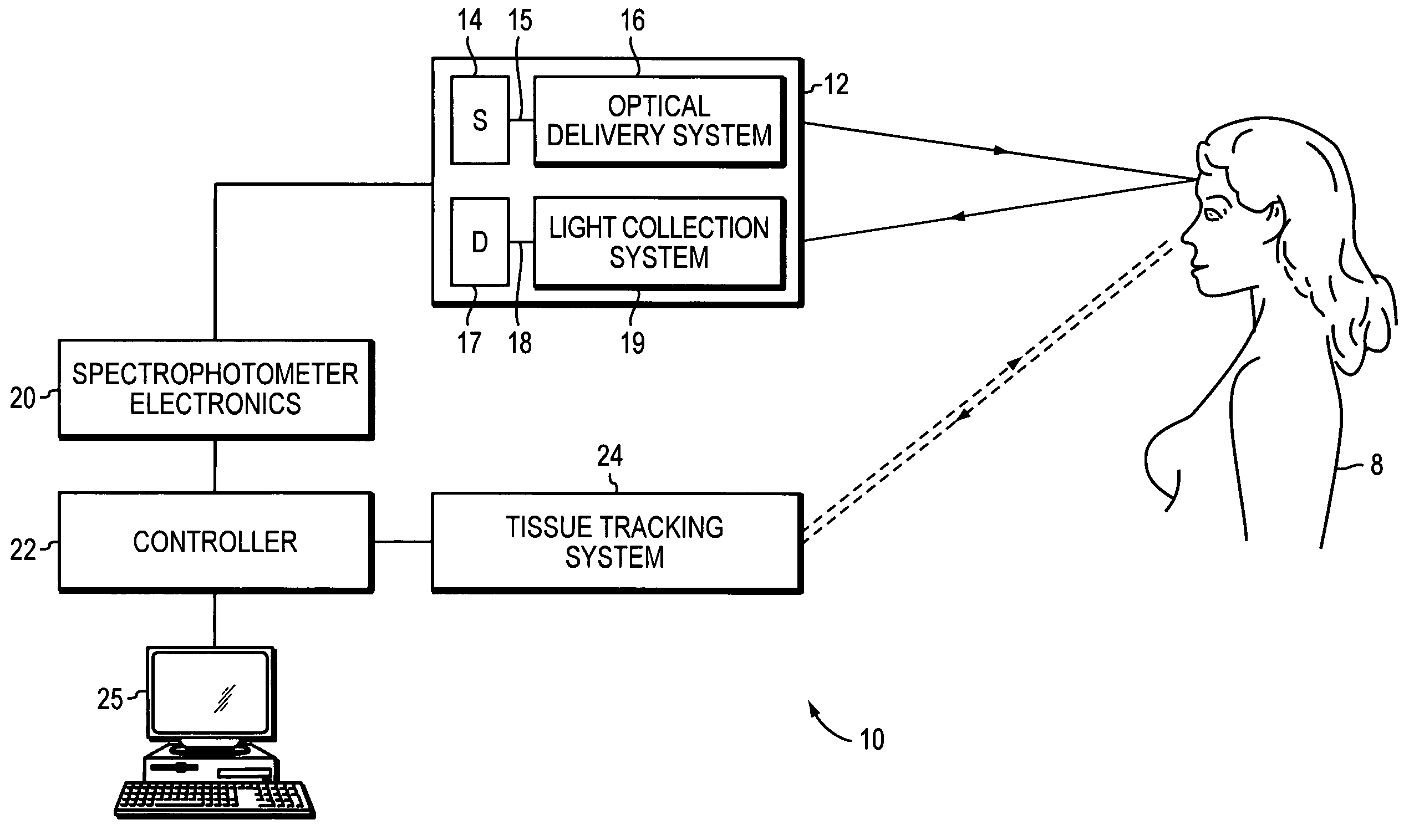Examination of biological tissue using non-contact optical probes
a non-contact, optical probe technology, applied in the direction of medical science, diagnostics, diagnostics using light, etc., can solve the problems of reducing the effective numerical aperture, reducing the light collection efficiency, etc., to prevent the detection of “noise” photons, eliminate “noise” photons, and reduce light collection efficiency
- Summary
- Abstract
- Description
- Claims
- Application Information
AI Technical Summary
Benefits of technology
Problems solved by technology
Method used
Image
Examples
Embodiment Construction
[0035]FIG. 1 shows schematically a non-contact optical system 10 including a non-contact optical probe 12, spectrophotometer electronics 20, a system controller 22, a tissue tracking system 24 and a computer 25. Spectrophotometer electronics 20 controls optical probe 12, including light emission from a light source 14, light delivery or scanning by an optical delivery system 16, light collection and receiving by a light collection system 19 and the corresponding detection by a light detector 17. Light source 14 emits a light beam of a selected wavelength focused and / or scanned over the examined tissue surface by delivery system 16. Light detector 17 receives light from a light collection system 19, which collects light emanating from the tissue surface. A controller 22 controls the entire operation of the spectrophotometer (including electronics 20 and optical probe 12) and controls operation of a tissue tracking system 24.
[0036]Tissue tracking system 24 is optional and operates tog...
PUM
 Login to View More
Login to View More Abstract
Description
Claims
Application Information
 Login to View More
Login to View More - R&D
- Intellectual Property
- Life Sciences
- Materials
- Tech Scout
- Unparalleled Data Quality
- Higher Quality Content
- 60% Fewer Hallucinations
Browse by: Latest US Patents, China's latest patents, Technical Efficacy Thesaurus, Application Domain, Technology Topic, Popular Technical Reports.
© 2025 PatSnap. All rights reserved.Legal|Privacy policy|Modern Slavery Act Transparency Statement|Sitemap|About US| Contact US: help@patsnap.com



